In 1953, the State of California commissioned three Ford step vans with custom aluminum bodies from the Aluminum Body Corp. of Vernon, California, for the Office of Civil Defense Radiological Services Department. These vans were used for a variety of tasks, including assessing the damage from nuclear fallout after a nuclear attack.
Of of these three vans, only one is known to exist today (although there was an Internet listing for what appeared to be another of the three back in 2016) and it ended up in the hands of racer Scott Birdsall, owner of Chuckles Garage in Santa Rosa, California.
Originally purchased from government surplus sometime in the ’60s, the van was turned into a mobile recording studio by its first civilian owner. It eventually ended up derelict until the owner’s nephew decided to bring it to Birdsall for renovation into a vehicle that was capable of exploring places such as Baja California.
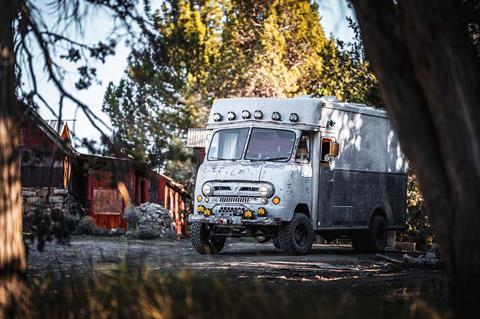
Birdsall removed the original gasoline straight-six engine, replacing it with a 5.9L Cummins 6BT and converting the van to four-wheel drive. When Birdsall’s customer became bored of the basic build, Scott purchased it with the intention of transforming it into the ultimate off-road camping rig, creating what is now affectionately known as the Nuke Van.
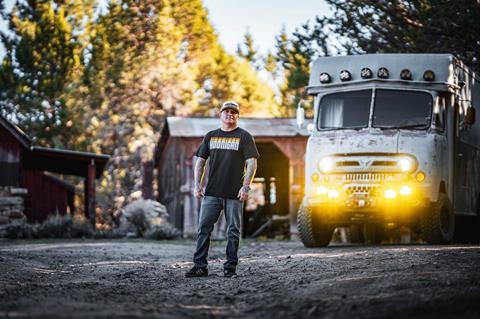
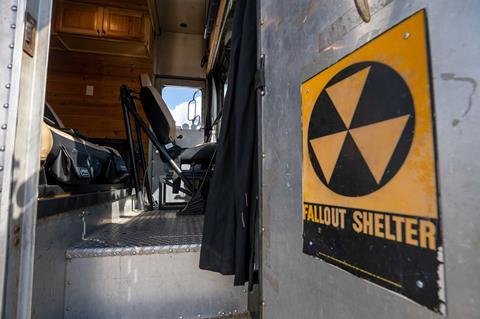
Starting with the factory chassis, Birdsall boxed and reinforced the frame, adding a high-pinion Dana 60 out of a 1990 Ford F-350 along with Ford Super Duty leaf packs and brakes (which now use EBC Yellow Stuff for improved braking performance).
The rear axle was swapped with a dually 14-bolt axle from Craigslist and uses the original leaf pack that has been modified by removing leaves for a softer ride and better articulation. Traction is enhanced with a front Eaton Trutrac limited-slip differential and a rear Eaton Detroit Locker.
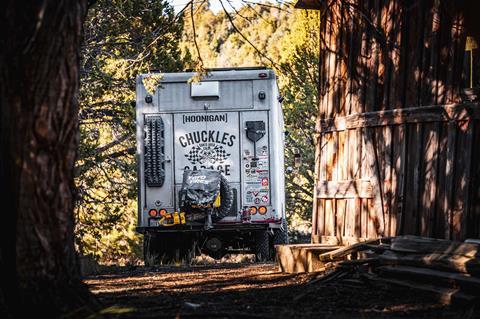
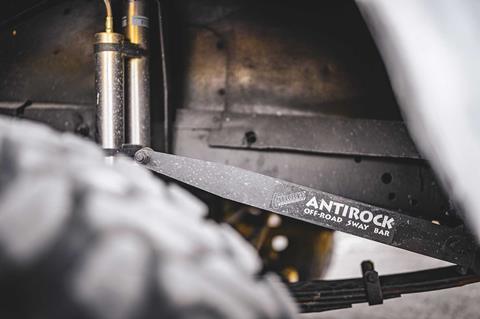
To control the Nuke Van’s mass and high center of gravity, Bilstein 7100 reservoir shocks have been paired with front and rear Currie Antirock sway bars, while rear supplemental load bags support the loadout weight of a long trip.
The rest of the driveline consists of a NV4500 5-speed manual transmission with a South Bend twin-disc clutch and a divorced, cast-iron NP205 transfer case.
The Nuke Van rolls on dependable and capable 34-inch Toyo Open Country M/T tires in the LT-metric sizes of 305/70R16 front and 255/85R16 rear, mounted on American Racing Baja wheels. In case Birdsall finds himself in a place where the tires are overwhelmed, a front bumper-mounted Warn M15-S winch with Factor 55 accessories is ready for self-recovery duty.
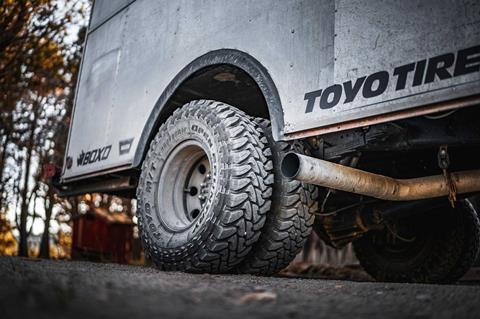

The internally stock Cummins 6BT 12-valve engine, which originally came from a low-mileage ’90 Dodge Ram two-wheel-drive pickup, has been enhanced with an ATS Aurora 4000 turbocharger, Dynomite Diesel EDM injectors, a custom intake, and a 4-inch MBRP exhaust. Birdsall estimates the output at around 250 horsepower and 650 lb-ft of torque. With 4.10 gearing, top speed is around 70 mph.
When asked about the interior noise level with the notoriously loud Cummins, Birdsall responded that, despite multiple layers of Dynamat, “You might as well pop the hood on a first-gen (Dodge) truck and operate the throttle by hand.” Which is to say it isn’t exactly luxury-car serene.
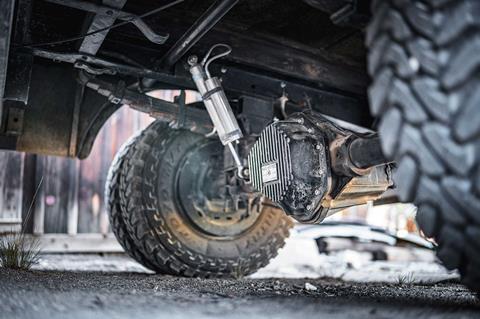
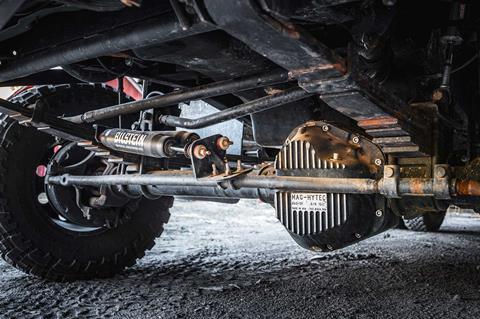
Birdsall tells us the hardest part of the swap was the crossover steering system, which had to be re-engineered to accommodate a modified driver seating position. To accomplish this, a GM van steering box with a reverse gear was commissioned.
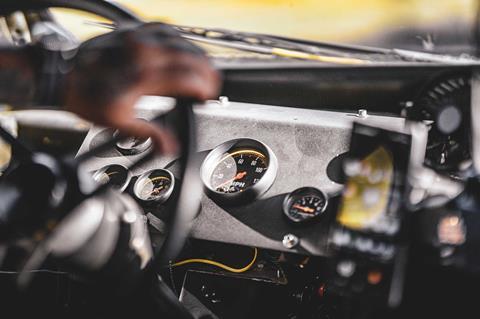
The control center of the Nuke Van features AutoMeter gauges, a Bluetooth audio system, backup camera, Vintage Air engine-driven air-conditioning system, VHF Rugged Radios race radio, and a switch panel to control the 16 Baja Designs lights (six XL80 floods and ten LP6 auxiliary units).
Specially made PRP racing seats—a driver’s bucket with lumbar and heat and a passenger bench—provide three belted positions. Preserved as a nod to the vehicle’s history is a bullet hole in the passenger side window, which was acquired while the big Ford was languishing before its restoration.
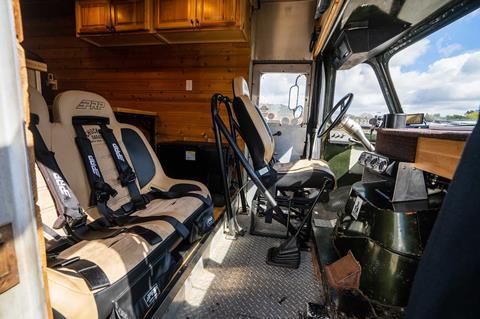
Of course, what makes the Nuke Van unique is the aircraft-grade aluminum body, which was hand-riveted and shows a level of craftsmanship only seen from bespoke coach builders.
Starting with this basic box, Birdsall’s vision for a “Tahoe cabin” on wheels to give him a reprieve from typical “cheap RVs made from particle board” started to take shape.
The body is almost completely original, save for some patch panels from the Nuke Van’s days as a studio, which cover up the original observation windows. At 11 feet tall, the van received a crash bar on the leading edge of the body to protect it from tree damage.
Inside, Birdsall fulfilled his vision of a cabin-like living space by eschewing the lead lining in the walls in favor of tongue-and-groove cedar planks installed by his buddy Casey Thompson, mounting hickory cabinets, and using bamboo on the countertops and heated floor.
A bunk bed arrangement at the rear of the Nuke Van provides accommodations for three, and the Tempur-Pedic mattresses ensure home-like comfort on the trail. Other amenities include a stove/sink combo, an RV fridge, a gun safe, and enough storage space to handle a 90-day supply of dry food.
Keeping everyone comfortable in the living area is a Toshiba air-conditioning unit. Entertainment comes in the form of a 32-inch Samsung smart flat screen paired with a Blu-ray player and a Kicker 5.1 surround sound system. Amazon’s Alexa can control most of the accouterments by voice, including the smart lighting system.
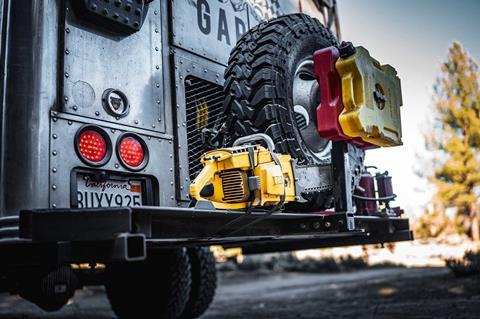
All of the electrical accessories are powered by four 100Ah Antigravity lithium-ion batteries for a total of 400Ah of capacity. These batteries are recharged by three Tesla residential-grade 400-watt solar panels on the roof and a 60-amp Outback Solar charge controller, feeding a 4.1kW Outback Solar inverter system.
A smaller panel keeps the starter batteries topped off and brings the total solar system output to around 1,600 watts. The entire network was built by Northern Pacific Power Systems and is wired to the same code as a residential home.
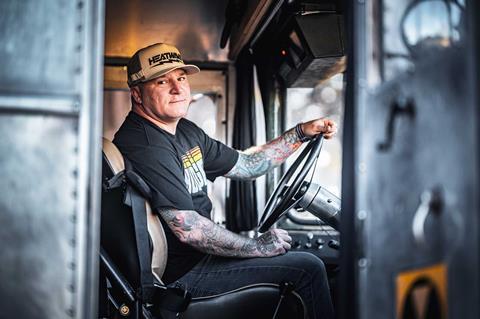
While the Nuke Van is functionally operational, Birdsall still has more in store for the Cold War relic. He plans on returning the observation windows to the body and swapping in a built Freedom Racing Cummins 6BT. But until then, you can count on him enjoying himself in places more peaceful than the Nuke Van’s original mission ever anticipated. As far as off-road accommodations go, it’s one bomb shelter, indeed.
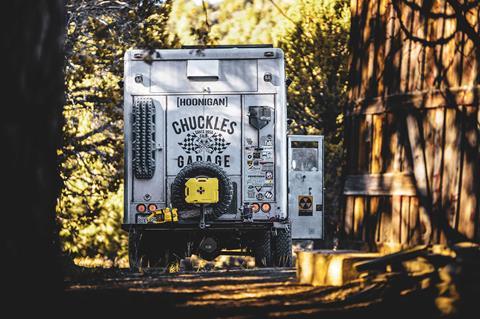
| The Nuke Van | |
|---|---|
| Base Vehicle | 1953 Ford Commercial P-Series van chassis |
| Engine | 1990 5.9L Cummins 12-valve I-6 turbo diesel, ATS Aurora 4000 turbo, Dynomite Diesel EDM injectors, MBRP 4-inch exhaust |
| Drivetrain | Four-wheel drive, NV4500 5-speed manual transmission w/South Bend twin-disc clutch, divorced NP205 transfer case, front Eaton Trutrac limited-slip, rear Eaton Detroit Locker, 4.10 gearing |
| Suspension | Front—High-pinion F-350 Dana 60 solid axle with Super Duty leaf springs and Currie Antirock sway bar; Rear—Corporate 14-bolt solid axle with leaf springs and Currie Antirock sway bar |
| Wheels & Tires | Front—305/70R16 Toyo Open Country M/T on American Racing Baja wheels; Rear—255/85R16 Toyo Open Country M/T on American Racing Baja dually wheels |
| Lighting | Baja Designs LP6 auxiliary lights (10), XL80 flood lights (6) |
| Upgrades & Accessories | Bilstein 7100 shocks, Mag-Hytec differential covers, Warn M15-S winch, Factor 55 accessories, DMOS shovel, LED running lights, Rugged Radios VHF, PRP racing seats, 1,600-watt solar system, Hi-Lift jack, Viair compressor, 50 feet of reel-mounted air hose, tankless water heater, Antigravity lithium-ion batteries, custom bullet hole, Maxtrax recovery boards, Rotopax liquid containers, 1963 McColloch 80cc chainsaw, Amazon Alexa-controlled HVAC, home theater and lighting |
Access More Great Stories!
This article originally appeared in OVR Issue 03. For more informative articles like this, consider subscribing to OVR Magazine in print or digital versions here. You can also find the print edition of OVR at your local newsstand by using our Magazine Finder.


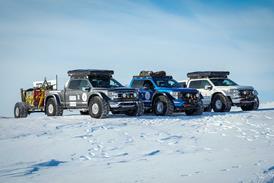
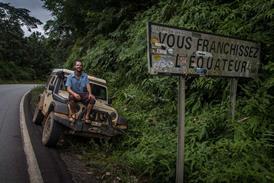
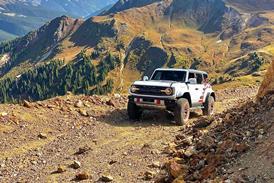

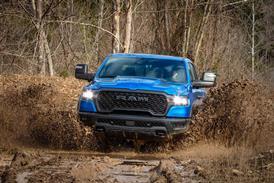
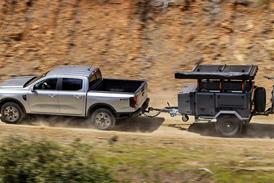

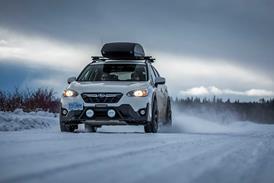

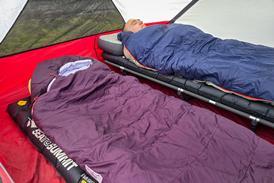

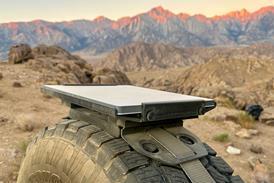

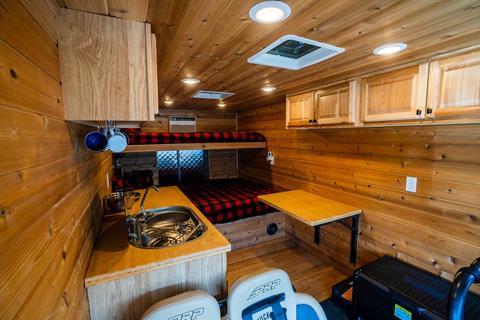
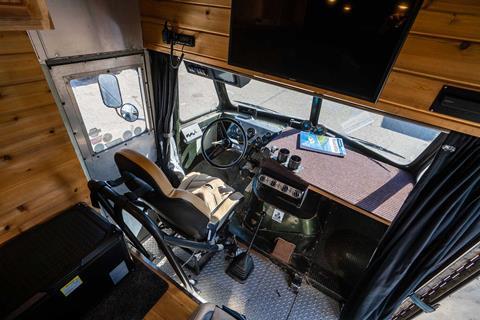
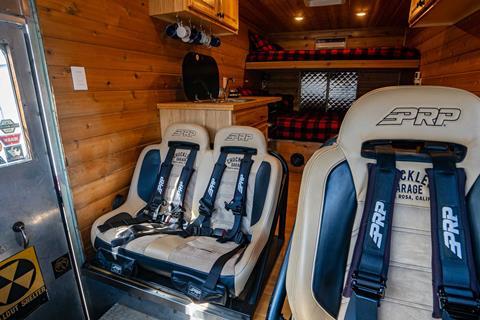
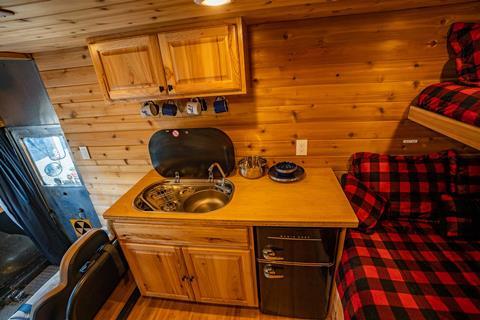
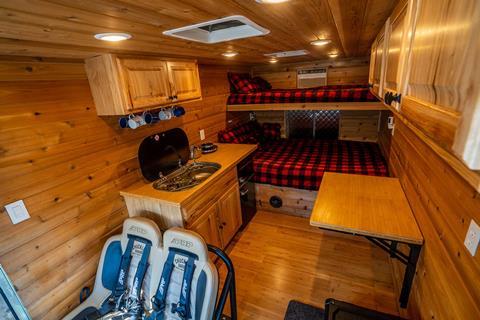
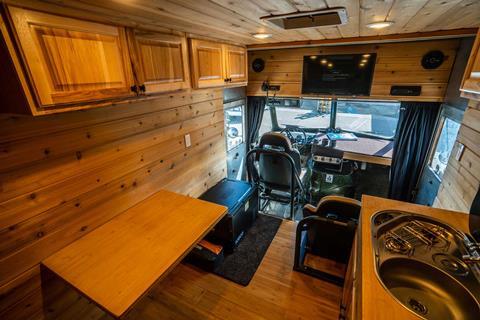






No comments yet